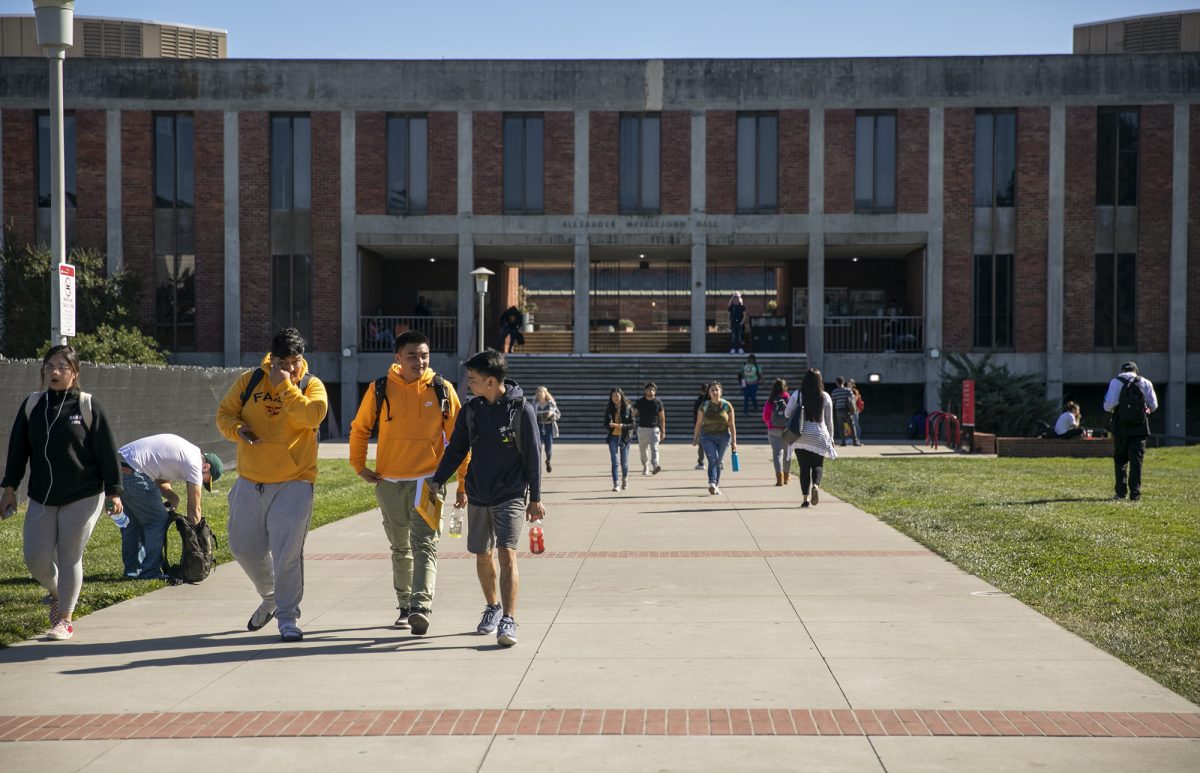CSU points finger at poor economy
Unlike Mastercard commercials, the cost of an education at a California State University may not be “priceless” ending.
Students are currently facing a 15.5 percent increase in fees for the upcoming 2011-2012 school year.
While the nation’s economic downturn did not affect the education of many CSU students initially, recent fee hikes resulting from the state government’s attempts to resolve a growing deficit have many students feeling the financial crisis.
This year’s fee hikes, which range from $100 to $400 depending on the campus, continue a trend of exponential fee increases over the last five years, according to the CSU online history of fee increases.
“At first I was looking to start at [Cal State] East Bay in 2005,” said Jeremy Lew, an accounting major at CSU East Bay. “I decided to go to community college first. And now that I have transferred, I believe the fees have doubled.”
In 2005, student fees were $2,520. For the 2009-2010 school year, student’s fees were up to $4,026, according to the online history of fee increases.
Students at CSUEB will be facing a $399 fee increase for the 2011-2012 school year, according the Board of Trustees meeting minutes from Nov. 9, 2010.
“It is not just the only fee increase we face,” said CSUEB sociology major Rachel Newsom. “When I first transferred in Fall 2009, the parking permits were $90, I thought that was a lot, until I bought one for Fall 2010 for $130. Combined with the cost of textbooks, the overall price is beginning to be hard to swallow.”
These fee increases are a direct result of the failing economy of California, according to a press release from the CSU.
The funding that the CSU receives is directly related to the state’s budget and has to work with the fiscal outlook of the state, according to the CSU website.
“The two primary sources of revenue for the CSU are funding from the state and revenue generated from student fees,” said Mike Uhlenkamp, the CSU director of media relations and new media. “For the 2009-10 fiscal year, the CSU received approximately $2.35 billion from the state—also the lowest level of funding since 1999-2000, and $1.5 billion from fee revenue and our operating budget was roughly $3.8 billion.
“For the 2010-11 fiscal year, the CSU will receive approximately $2.62 billion from the state,” continued Uhlenkamp, “which is still $350 million less than 2007-08 and roughly equivalent to the level of state funding in 2005-06. It should be noted that in 2005-06, CSU enrollment was approximately 405,000 and we are expecting to serve many more students than that this year.”
But the costs are not the only issues CSU students face.
“Because of such a dramatic reduction to the level of state funding,” said Uhlenkamp, “we were forced to implement several cost-cutting measures, including employee layoffs and furloughs and class and enrollment reduction across the system. As a result, the quality of service to CSU students suffered.”
As Uhlenkamp said, there would be a wave of new students entering the CSU system and more classes can be opened. With that said, the question of current students and getting their classes still remain.
In Andrew Sibilla’s case, the CSUEB English major has taken many classes just to stay within full-time student status and qualify for financial aid.
“I am fed up with not being able to get the classes I need, or even have them offered,” said Sibilla. “I have had to set back my graduation date a full year because the classes aren’t offered or I can’t get into them.”
Like many students, Sibilla has taken what financial aid offered to him in the form of loans. Having to take classes to be eligible for the loans makes the cost of his future degree rise along with the fee increases.
One may be worried that, with an increase in fees, students may have less access to funds.
“Fortunately, current economic conditions had not negatively impacted the amount of federal and state financial aid available to students,” said Rhonda Johnson, CSEUB’s executive director of Financial Aid.

















